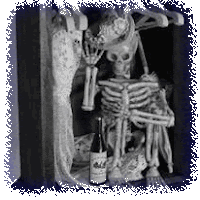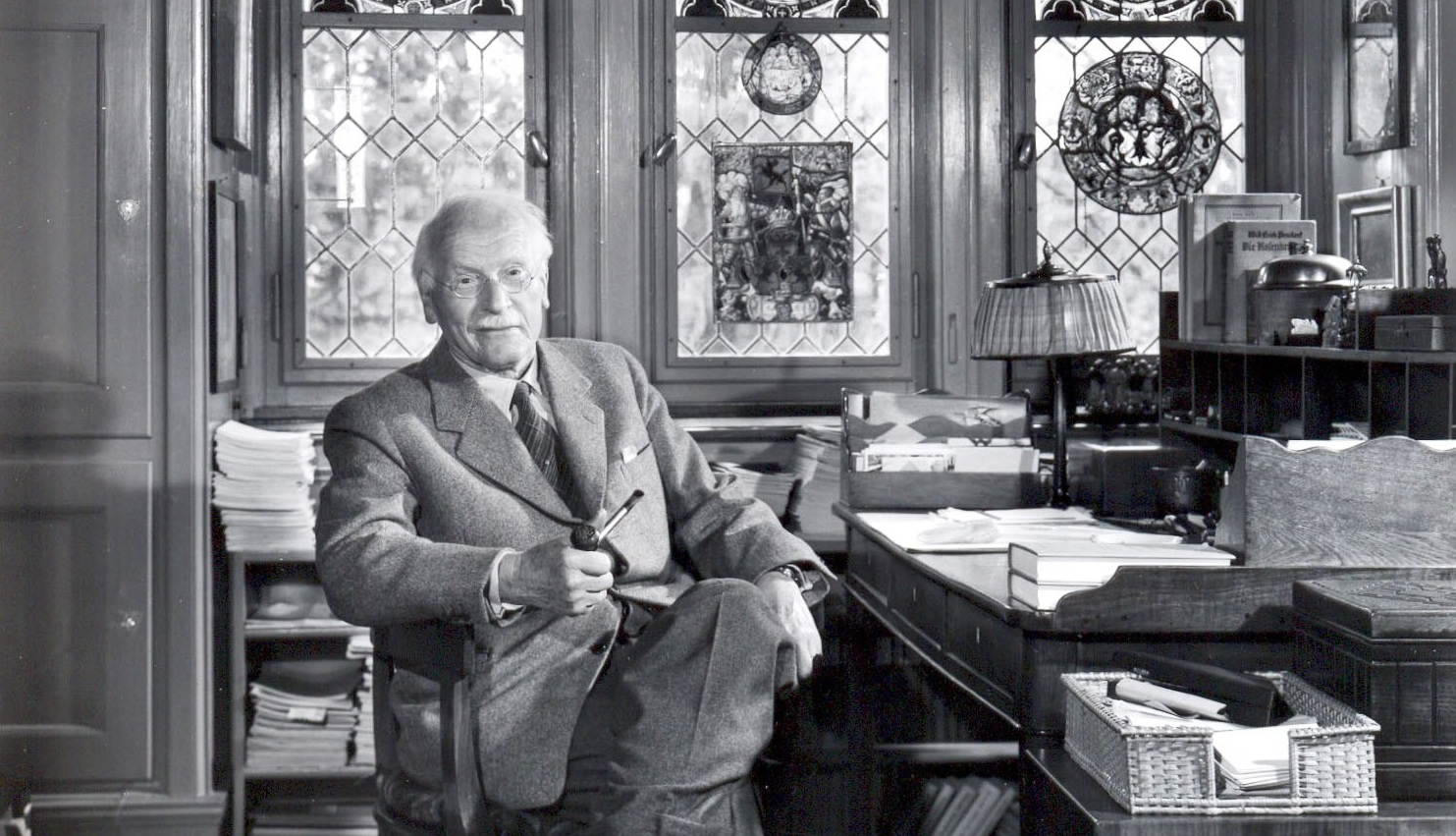The term archetype was introduced by Carl Gustav Jung - psychiatrist,
founder of the school of analytical psychology- at the beginning of the last
century. He suggested that after the ego (the human mind) and the personal
unconscious (repository of repressed emotions, feelings and traumatic memories)
in the structure of the human psyche there is a deeper layer - the collective
unconscious. It is the same in all people, being the place of the human
experience, which is transmitted from generation to generation.
The contents are the archetypes of the collective unconscious (of the
Greeks. Arxetypos, "prototype"). Jung wrote about them as models and
patterns of instinctive behavior patterns that influence the perception of
reality and the reactions, in some way to the events in our life. This is the
shape of the main concepts of the world, of life and human relations, which are
basic, as the instincts of the animals, and that do not depend on the level of
education.
In their studies, very soon, came to the conclusion that the existence
of archetypes, through the exploration of dreams, the images and the
hallucinations of their patients. They found that ancient symbols, mythological
figures and images, there were, even in those who never had seen before, who
were not interested in the history of the ancient civilizations and did not
know mythology. Suddenly seemed to be an absolutely understand.
Another test of his theory, Jung believed that the fairy tales, legends
and religious texts of various peoples of the world were built on the same
stories - the history of love, loyalty, betrayal, revenge, the death and the
Resurrection. We see in these archetypes characters similar corresponding to
God, the devil, The Wise Old Man, Mother, Hero, children, etc. All of them
present in the folkloric heritage since remote times and isolated frequently
from one culture to another, that also have a similar content, semantics and
emotions.
If something happens in life, which corresponds to an archetype, it
becomes active, and it reaches an irresistible compulsion that, like the
instinctive reaction prevails, despite the reason and free will.
There are archetypes, as many as typical situations of life - explains Jung:
The archetypes do not elect to influence or influence in us, simply can
be activated when the circumstances of our life will fit in a recognizable
archetypal history. In reality this is the mechanism of action of the
archetype. They are therefore in a situation of struggle, when we have to deal
with something or someone, we can discover the qualities of an enviable
courage, desire or not sacrificed and that appeared in us not as a result of
learning . This is the manifestation of "primitive instincts mental"
- archetypes.
In this case, we can talk about the impact of the archetype of the hero.
Touch the process of life with different archetypes and through this opening to
the contents of the unconscious, the man passes through the path of the
individualization - the path of self-knowledge and acceptance of itself in all
its forms, which leads to the discovery of the real "me" and its
potential.
Jung called this the "opening of himself". The archetype of
the Be - is the archetype of the entirety of the unity of the conscious and
unconscious. It is the achievement of myself, the achievement of the
understanding of what you are in reality, is the main task of the
individuation."… The Consciousness - Jung writes, - will no longer be
vulnerable too selfish all the desires, fears, hopes and ambitions … On the
contrary, assumes the role of contact with the world of objects, which leads a
man to the absolute communion and indissoluble union with the world in general.
Jung and the archetypes in the Tarot
The Tarot cards have been the subject of various approaches: the most
common considers it as a divinatory mancia; the other approach, and to some people
more disturbing, consider them as a symbolic language the bearer of a
psychological knowledge and philosophical. The first trend has been
unfortunately a popularization and it has spread primarily as a means to read
the future.
The second, in our present era, considers the Tarot a map of the
processes and circumstances before whom we encounter the human beings in the extraordinary
journey through life. A language for the expression of psychological ideas.
This current, in our time, was driven mainly by the exceptional
psychologist Carl Gustav Jung (1875-1961).
According to Jung, the model that
discovers the Tarot is not another thing that the deployment of the soul life.
Jung, who had no prejudice to the time to address the knowledge, also
investigated the Alchemy, astrology and the I-Ching. It was he himself who
translated ancient knowledge, rediscovering that in the human psyche there is
an autonomous process, independent of the time or geographical location, which
aspires to a goal which he named process of individualization.
Our psyche is
split, split between the conscious and the unconscious, between what we know and
what we ignore. Individuation refers to the process through which
integrates all the polarities, dualities and internal contradictions. We can
access a new balance, through the flavors and troubles of the human experience.
These experiences, of which we are learning, Jung discovered that are
archetypical, are repeated in all eras and cultures under different guises.
Then, in the Tarot we are with these key experiences or archetypal experiences
recounted in a visual language, shocking and by some very deep. These
archetypes are among others, the mother, the Father, love, justice, the
Transformation, the crisis, the sacrifice, etc.
The philosopher and mathematician Russian Piotr Ouspensky (1878-1947),
co-creator of the Fourth Way, classified the Tarot as a philosophical machine.
Ouspensky referred to the Tarot as an abacus philosophical, said: "it is
an instrument for the exercise of the mind, for getting them used to new
concepts and wider, to think in a world of higher dimensions and to the
understanding of the symbols".
And even more so the Tarot is a tool for guidance and self-awareness,
provided to learn the skills to read its symbology. For example, the card that
starts the deck is The Fool. Let us look at some of the characteristics of its
complex symbology. The Fool symbolizes the individual that lacks awareness of
oneself as a person, i.e. that is in a phase of such immaturity and infantilism
that has not yet reached the stage of development of consciousness. It is out
of every order and shape, and any law that is compatible with the others. Can
be neurotic, always moving in a circle around his problem, without going to any
part determined. It is the eternal turn of the individual without objective
defined, without a specific target. Means, movement, displacement, travel,
changes, but in an unexpected way, improvised and unexpectedly.
Person who lives
and enjoys the present, that takes all the juice that can to immediate,
unconcerned about the damage that could cause. The Fool represents the spirit
of the game, capricious, wanderer, with unlimited energy, walking without
fatigue by the universe without goal known. Without worrying about what is to
come, even look over your shoulder.
The Fool is that deep impulse of the
unconscious that moves us to search. The Fool is lonely; its method, secret is
a nomad energetic, immortal and present in all parties. It is the most powerful
of all the arcane of the Tarot. It has no fixed number, it is free to travel at
whim, disrupting the order in their attacks. In any game (as the jester, or
Joker) bursts unexpectedly creating a stir huge. The Fool has a connection with
the primary energy of fire and its habit of dancing invisible in the middle of
the deck, providing new impetus to each card.
The Fool connects two worlds between them, the everyday and the
imagination, he moves freely between them and also get confused from time to
time. The Fool represents the idealistic, naive, played that moves guided by
their instincts, which sometimes can put you in danger. His curiosity impulsive
leads us toward impossible dreams while, at the same time his playful nature
will return us to the world easy of our childhood. Assumed that it is a part of
ourselves separate from our ego aware, can lie mental traps or at least confuse
our language. Sometimes his jokes introduce us in places where our ego would
never have dared to go.
The Fool represents a part of us which innocent but knowing what it
does, is engaged in the search of self-knowledge. Through the experiences that
we look know mad, but that then we will recognize as crucial for the
confirmation of our lives.
REV















